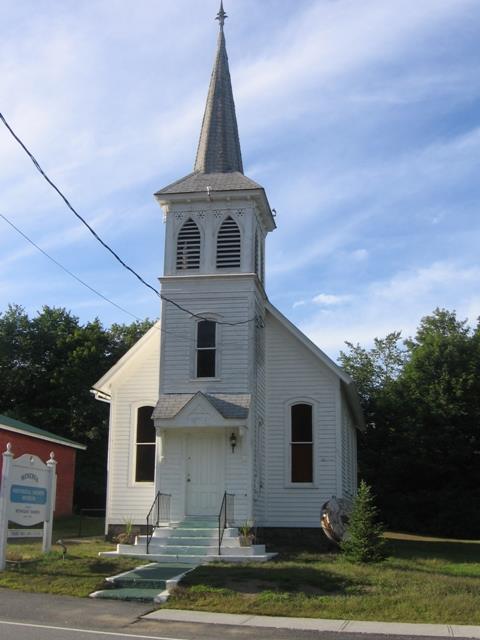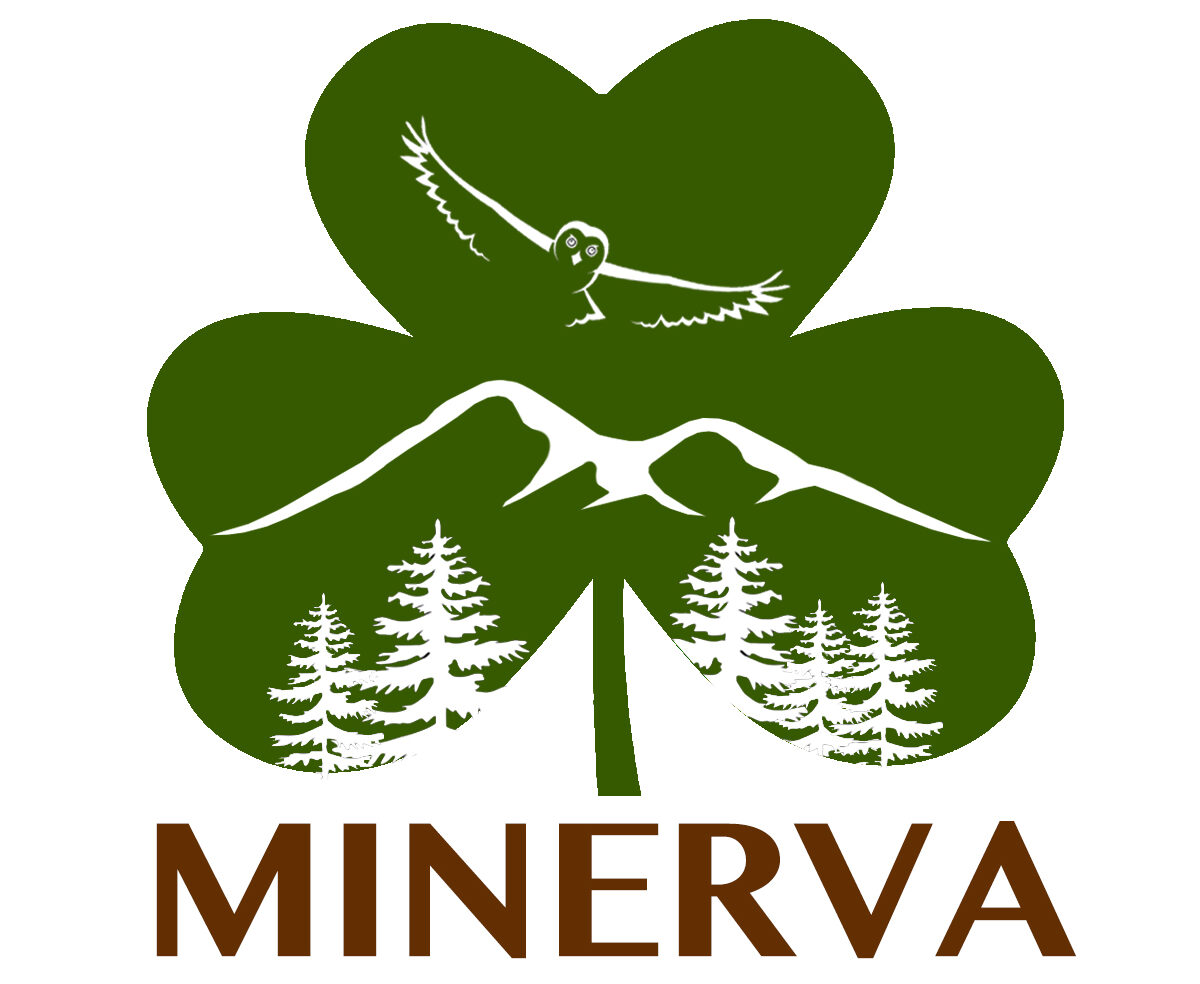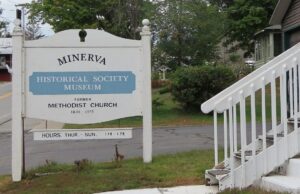On the map, the township of Minerva is covered with numerous small lakes, ponds and streams. The Hudson enters the township at the western corner where it is joined by the Indian River to form its southern border. Together they flow southeasterly until joined by the Boreas and then south to the sea.
Lumbering was the principal early industry in the town. In 1805, William Hill, for a bonus of 200 acres, built saw and grist mills on Minerva Creek to serve the lumber industry. Lumbering was primarily for the building of homes and for clearing land, until 1840, when the first log drives began sending the logs to other markets.
In 1885, the historian H.P. Smith realized that lumbering was not sustainable and wrote, “The consequence has been the decay of mills and so rapid a consumption of timber that the lumber interest in all its branches is fast declining and must soon give way entirely to agriculture and other occupations”. Between 1838 and 1875, the number of cultivated acres grew quickly. Grains, potatoes and corn were grown, along with subsistence vegetables and flax for clothing. Apples, cider, maple sugar and honey were among the crops in 1875. From the 1875 census we learn that there were 200 horses, 58 working oxen, dairy herds, hogs for slaughter and over 700 sheep. Little of this industry remains today.
Potash was a lucrative by-product of land clearing. Potash was used as an ingredient in soap and was used in England in the making of wool. The American Revolution destroyed the direct trade with England, but in Northern New York, potash was illegally shipped to Canada for transport to England. The market dried up altogether at the time of the War of 1812. Because much of the forest was hemlock, the town supported a large tannery from 1840 until 1867 when the tannery burned. In 1865, the population of Minerva reached its peak with the tannery running at full throttle and the lumber industry still strong. By the close of the century the population had dropped below 600 and would not climb again until the Tahawus mines reopened in 1941.
Minerva benefitted from two main roads in its early settlement, the Canton road and the Carthage road. The streams and rivers that aided in sending logs to market, tended to separate settlers from one another. At the first official town meeting in 1817, the prime need for money was for bridges. Roads were characterized in the 1800’s as “impassable in winter, impossible in summer”. Roads gradually became the principle mode of transportation. The famous Roosevelt Marcy Memorial Highway, (Rt. 28N), is the main road in Minerva.
The last river drive was in 1950. Hardwoods had replaced soft in lumbering. For a time, hardwoods were harvested and made into rollers for mangles or heated rollers for ironing, and bowling pins. Both industries were short lived. In 1957, Finch, Pruyn and Co. began making fine paper from hardwood. Today a number of local businesses still do contract lumbering for Finch, Pruyn.
Minerva is home to a number of children’s summer camps, as well as sportsmans’ clubs. In 1931 and 1932, the town built a dam across Jones Brook creating an artificial lake, a beach and a playground. The beach is named for Francis Donnelly who first became Town Supervisor in 1934. He was part of a large Irish clan arriving in Minerva in the mid-19th century. Donnelly served as Supervisor until his death in 1980, a total of 46 years.
Minerva Historical Society Web Page
Adirondack History Center Website – Minerva


